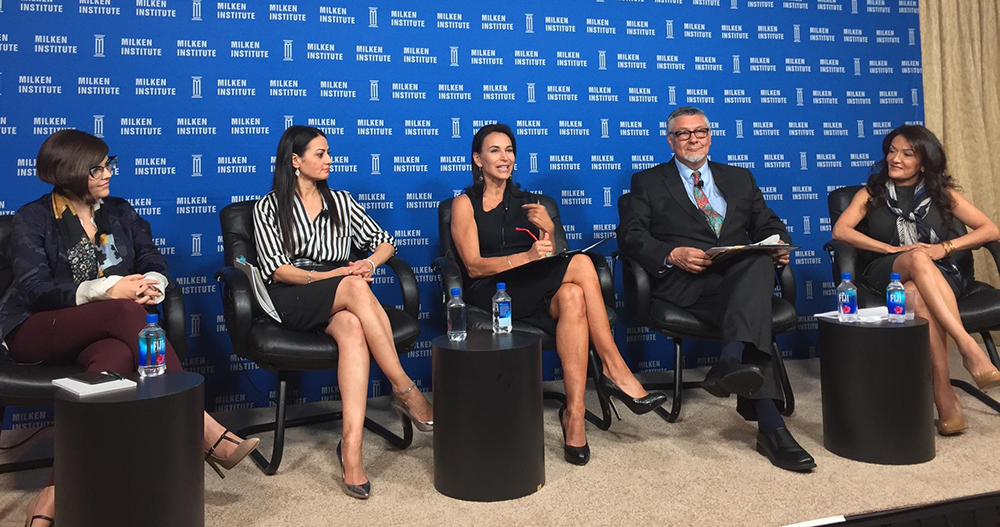
Multiculturalism and diversity are integral elements of American culture. And they’re gaining prominence, which poses new and replete marketing opportunities for brands looking to engage with multicultural consumers. While the U.S. is rich with diversity, Latinas are a particularly notable demographic. Within the overall Hispanic demographic—which controls $1.3 trillion in buying power—the women are the ones in the driver’s seat, since many of them are the heads of their households and principal breadwinners in their families.
With a key understanding of the economic impact of this demographic, Mónica Gil, SVP and General Manager of Multicultural Growth and Strategy at Nielsen, joined several other speakers at the Milken Institute’s recent “Marketplace Influence Empowers the New Latina” panel in Los Angeles.
“Latinas make up 17% of the female population,” said Gil in her opening remarks. “In the next 40 years, Latinas are going to grow to become 30% of the U.S. population. So what does that mean for marketers, CPG companies and networks? It means that if you start to think about your core constituent for growth, you’ll see it’s women 18-34. It’s the soccer moms. And guess who the soccer moms are? They are Latinas.”
As a result of Latinas’ growing economic prowess, the panel discussed how leading companies will increasingly need to targeting their pitches and products more directly to the needs and preferences of Latina consumers. And when it comes to meeting those needs, Gil noted that companies are at different stages of their multicultural journey: some are just starting to understand the significance of the Latina market and some are deeply entrenched.
“It is very important to bust myths about the Latino market,” she said when asked how Nielsen helps companies learn about the sector’s growing needs. “It is about helping companies understand us, Latinas, as we are and now as not as past perceptions have expected us to behave.”
Despite the growing financial significance Latinas are having on the purchasing landscape, the panel acknowledged that their influence doesn’t—and shouldn’t—stop there. In fact, the panelists noted that Latinas are beginning to realize that they can use their economic clout to encourage improvements in education, health care and environmental protections, and to create new economic opportunities.
“One in five women in the U.S. is Latina,” Gil said. “This is an opportunity for the general market to stop looking at the group as an ‘other’ category. They’re Latinas. This isn’t simply about demographics anymore, it’s about demand and Latinas are leading the growth in a number of industries and categories, with mounds of data to prove it.”
Watch the video of the panel here to learn more about these topics and how Latinas are changing the U.S. economic landscape.
